




 [Radtour Nord1]
[Radtour Nord1]
History of Dorsten - Station 27: Wulfen
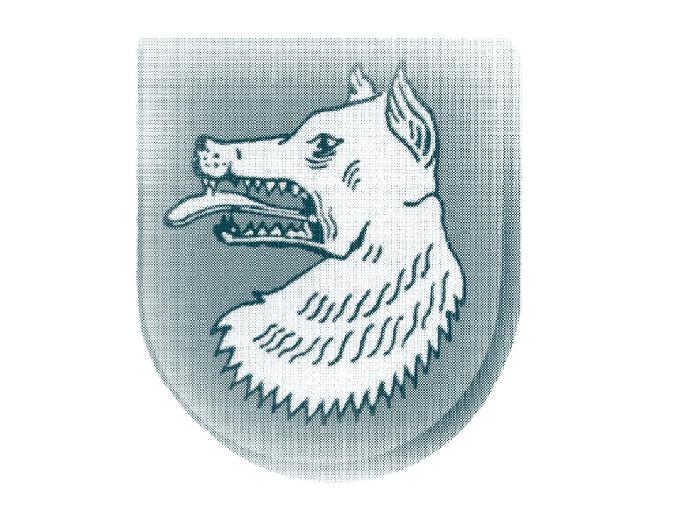
Willi Duvenbeck, from the local history society of Wulfen,, explains why this position was chosen, "several historically important places can be seen from this position", and he points them out: the station, of which only one red column remains, the Brewery Rose and the building shacks in which the Muna was planned in 1937.
The History Club of the Petrinum Grammar School has also thoroughly investigated the history. And so, the first findings go back to the 12th century, since from the year 1173 a lineage from Wulfheim, "von Wulfheim", is mentioned in numerous documents. It is definite, however, that Wulfen becomes an independent parish ( Translator's note: The German word Pfarre has been seens to mean Pfarrei (parish)). In the 16th centruy, there is then talk of the "Sheets of Wulfen" (Wulfener Laken), a very valued textile of that time. Canvas weavers, dyers and wool weavers had settled in the area.
The year 1811 is of relevance: " A French commander found the road of that time already too bad and had it improved" ("Einem französischen Feldherrn war damals die Straße schon zu schlecht und er hat sie ausbauen lassen" ) related the Mayor, Lambert Lütkenhorst in his opening speech. The B58 is of course meant here, which - together with the start-up of the railway line in 1879 - provided a good logistical connection of the area. Naturally, the brewery culture belongs among the references on the board - that a headache tablet is required after a beer from the Rose brewery, isn't mentioned", joked Lütkenhorst. („dass man nach einem Rose-Bier eine Kopfschmerztablette brauchte, steht da aber nicht drauf", witzelte Lütkenhorst.)
|
|
1173 |
_ |
The lineage "of Wulfheim" (von Wulfheim), that probably gets its name from the court of the same name given by bishopric fief and which has belonged to the "Drostenamt" (Translator's note: area of Dorsten's(?) jurisdiction) since the end of the 11th century, is mentioned from this year onwards in numerous documents. | |
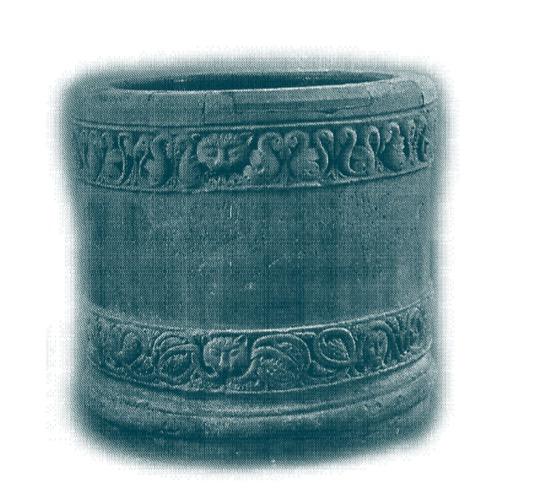 St Matthäus (St Matthew): Baptismal font 13th Century |
1280 |
_ |
Wulfen is shown as being an independent parish. | |
|
|
1569 |
_ |
Bernhard von Westerholt, the Lord of Lembeck, gives permission for the wool weavers of Wulfen to form a guild, which is confirmed in 1654 and 1674. In addition, the canvas weavers and dyers have great importance, here. Sheets of Wulfen (Wulfener Laken) were widely highly valued. | |
|
Prussia introduces freedom of trade.
| _ |
1811 |
_ |
As part of the planned military Wesel-Münster road, Napoleon has the street paved from Altschermbeck to Wulfen; the further extension to Haltern is completed in 1835. |
|
|
1825 |
_ |
The seat of the mayoralities Altschermbeck and Lembeck is moved from Schloss Lembeck to Wulfen / Haus Wienbeck and the administraion is performed there by J.Brunn. From 1877, the local government of the seven municipalities of the Herrlichkeit Lembeck at that time is housed in the old administrative building "Alten Amtshaus / Standesamt" and from 1909 to 1933 in the new administrative building "Neuen Amtshaus" on the street named Halterner . nowadays, Dülmener Straße. | |
|
The Culture Struggle
| _ |
1879 |
_ |
Wulfen gains a connection with the railway following the start up of the railway line Oberhausen-Rheine. The brewer, Lohkamp, establishes, in the same year, a regional brewery, the ownership of which was by the Rose family between 1903 and 1937. The production of beer by the Rose Brewery was discontinued in 1991 . |
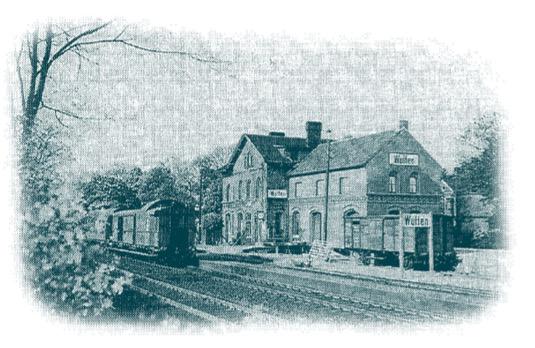 The Railway Station at Wulfen before the Second World War |
1937 |
_ |
The Nazi Regime seized the land of the present-day "Muna" and erected a Munitions institution. Many men and women from Eastern Europe performed forced labour here, during the Second World War. The British Forces took charge of the Munitions Depot, in 1945. It has been under the control of the German Armed Forces since 1999. | |
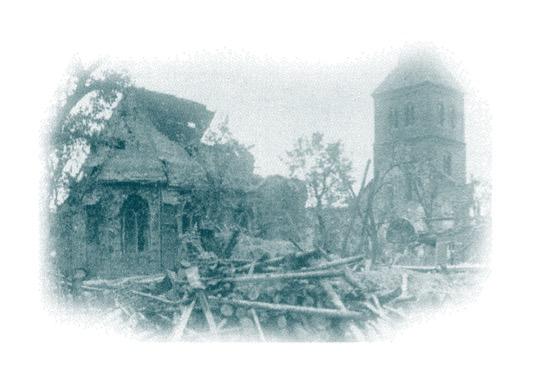 The Church Matthäuskirche (22.3.1945) |
1945 |
_ |
During a bombing raid by American airmen on 22nd March, the church and 15 houses in the centre of the town are completely destroyed. There were 23 war victims within the civilian population to lament by the war-time attack. | |
|
Dwight D. Eisenhower becomes 34th President of the USA.
| _ |
1953 |
_ |
With a large community participation, the re-constructed Catholic Parish Church of St Matthäus is officially newly inaugurated. One year later, the newly built "evangelische Gnadenkirche" church located at "an der Potmere" is inaugurated. |
|
|
1958 |
_ |
In the presence of the German Minister for Trade and Commerce, the first cut of the spade was made for the sinking of the shaft of the coal mine "Steinkohleberwerkes Zeche Wulfen 1/2" | |
|
|
1975 |
_ |
The independent local authority of Wulfen, consisting of the farming villages, Dimke and Deuten, as well as the district of Barkenberg, created in 1961, is merged with the town of Dorsten. | |
|
|
2000 |
_ |
The ongoing mining crisis results in the closure of the mine at Wulfen (Wulfener Zeche). The shafts are filled, the conveyance frameworks demolished in 2002. | |
|
Pope Benedict XVI starts his Pontificate 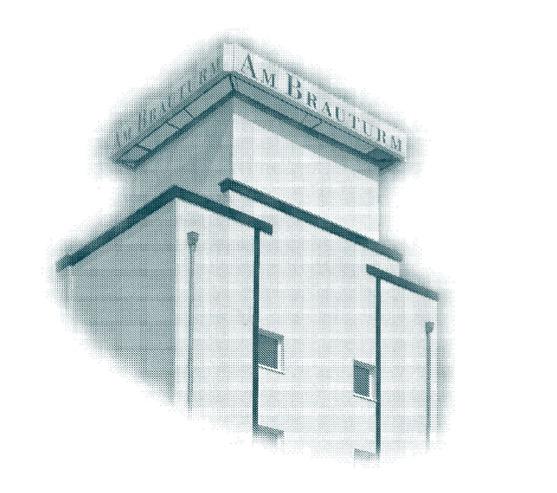 The new centre of Wulfen "Neue Wulfener Mitte" | _ |
2005 |
_ |
On the site of the previous brewery at the street address "Hervester Straße", new trading centre is created, which retains the name of the brewery chimney tower "Am Brauturm". |
[zurück]
Daten und Fakten
Eröffnung - 19th October 2007
Adresse - The bank "Volksbank Wulfen" at the location "Wulfen Kleiner Ring"
Geodaten - N051°43'06
Official opening ceremony on 19th October 2007
The history of Dorsten interests people. Hence. there was a considerable group of people gathered in front of the bank "Volksbank Wulfen" for the official opening ceremony of the 27th History Station, inclucing a realistic-looking "Kiepenkerl". ( Translator's note: Kiepenkerl was the name given to former travelleing merchants in this area.) The new display board has its place at the corner of the roads "Kleiner Ring/Hervester Straße".
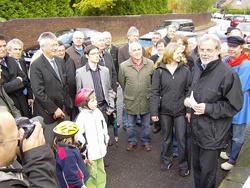
On 19.10.2007, the official opening ceremony of this display board took place at the bank "Volksbank" at the corner of the roads "Hervester Straße / Kleiner Ring".
The Mayor, Mr Lütkenhorst and the spokesman of the history group, Willi Duwenbeck, explained the historical contexts.
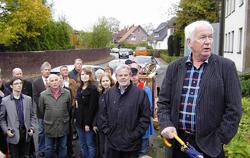
Willi Duvenbeck
A place that has something to say: Wulfen
A realistic-looking former travelling salesman known locally as a "Kiepenkerl" - Photos: Wulfen-Wiki.de C.Gruber 19.10.07 (Translator's note, assumed 2007)

Ein stilechter Kiepenkerl - Bilder: Wulfen-Wiki.de C. Gruber 19.10.07

